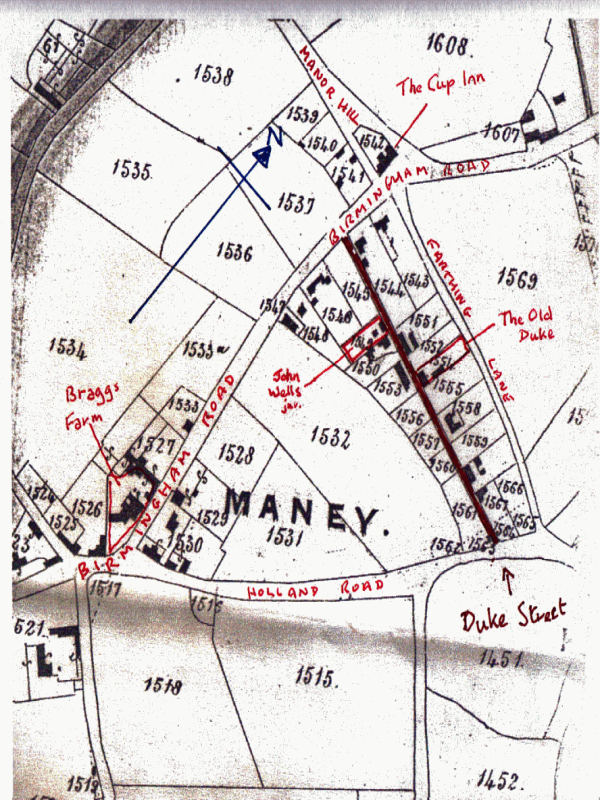Sarah Holbeche, a Sutton Lady whose Victorian Diary is in Sutton Reference Library, could, in 1840, walk from Sutton up Birmingham Road past the Golden Cup Inn through rural countryside to the hamlet of Maney. Most of the fields were part of the 200-acre farm of Farmer Jenkins of Braggs Farm (now Thomas Coulborn and sons antiques). On the left hand side the only road through the fields was Farthing Lane; looking back from Maney, the picturesque prospect of Sutton was the subject of several prints by local artist Miss Bracken.
The population of Sutton was increasing, bringing with it a demand for houses not only for the wealthy businessmen from Birmingham but also for workers and their families. Entrepreneurs were quick to see the opportunities for development, and one of them, Richard Sadler, purchased a six acre wedge-shaped field called Cock Close opposite the Cup Inn. Sarah Holbeche noted: March 1846 “Mr. Sadler’s field at Maney cut up into building lots - the wedge that was soon to spoil the entrance to our town.” Duke Street now runs down the centre of this “wedge” of land, but at first some of the building plots were developed independently, Duke Street itself only being made in 1860, according to Miss Holbeche, and known by a variety of names - “1860, February. Duke Street alias Maney Field alias Bun Hill was made” - but its official name was Sadler Street at first.
Several of the building plots on Maney Field were developed in the 1850s. William King obtained a plot (1551 on the plan) and built a row of four cottages for rent. John Wells Junior built a house on plot 1550 in 1853. His father, John Wells senior, was a maltster, described in the 1851 census as a maltster’s labourer, living with his large family in a humble cottage at the bottom of Mill Street, but his son John was rising to fame and fortune as a jockey, soon to be Champion Jockey. John Wells junior was able in 1853 to afford a handsome new house for himself and to install his father in one of the new cottages opposite. Young John (he was 20 in 1853) intended to live in some style - the outbuildings included a gig house and stables as well as the more usual cowhouse and pigsty. When the house was sold in 1859 it was advertised as having a large garden and extensive and commodious stabling “erected in 1853, in a substatial manner, regardless of expense, the House contains four bed-rooms, two parlours, kitchen and back kitchen and the stables have rooms over.”
Another plot developed in 1853, plot 1554, was bought by George Smith, who erected a public house on the site. He named the pub after his hero the Duke of Wellington who was known as the Old Duke at the time of his death in 1852 at the age of 83. It was because of this pub, “The Old Duke Beer House” that Sadler Street was later renamed Duke Street.

